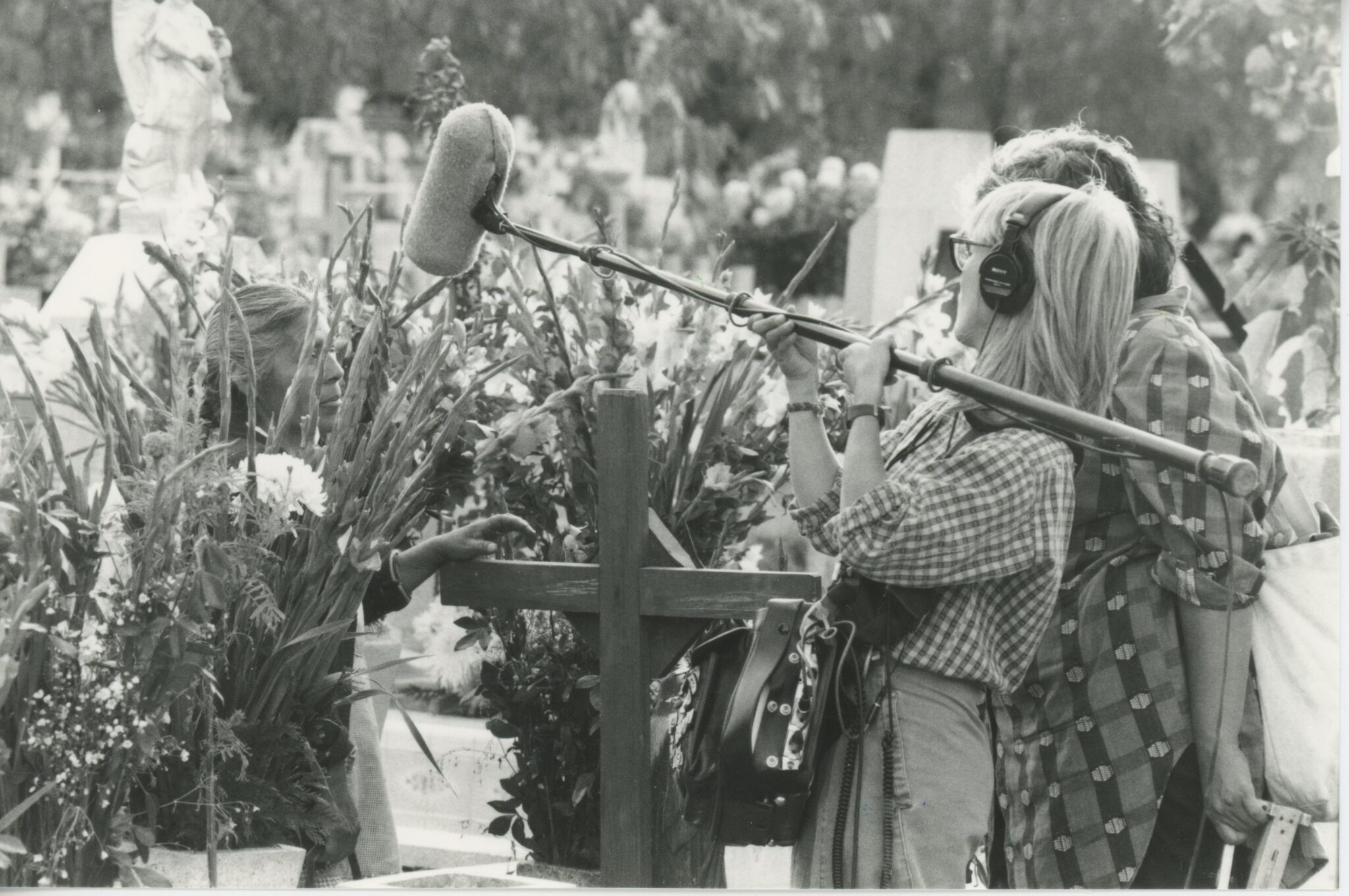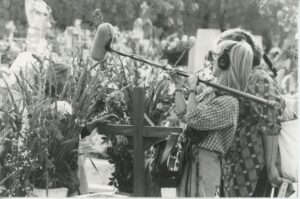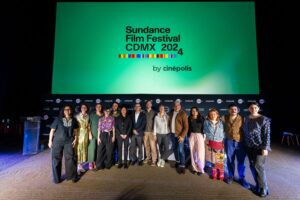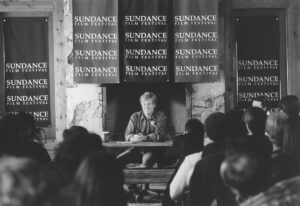[Editor’s Note: This interview is part of a larger feature about the women documentary filmmakers who blazed trails for the craft by premiering their films at the Sundance Film Festival in the 1980s. Please read the main introduction to this feature here.]
By Bedatri D. Choudhury
What do you remember of the 1986 Sundance Film Festival?
Sundance was born a heavy baby. In those days, it was kind of the only place that films like mine could exhibit on the West Coast. It just seemed like the perfect place. It was very exciting because it felt like a new movement of documentary cinema that was being birthed. And I wanted to be a part of that, of course. I can’t remember really, what other festivals held the same kind of weight as Sundance.
I remember it being really cold, it was awful. I remember having our gatherings at the Moose Hall. And in the basement, they used to have a second hand clothing store. I remember buying a coat for $25, and it was the warmest coat I ever bought. It was probably from the 1930s.
Was activism always the focal point of your films?
It was extraordinarily important. There was only a certain type of film that was being made in those days, and they were lovely films. But I think what we dared to do was make something very activist and we tried to create something in terms of a movement. So we decided, we have to go for everything. We needed the style to be our own style, our concepts, our thoughts, and not it into the old pattern of making only certain types of film. And Sundance was the place to show it. I think the movement really began there.
How did you get around to making Las madres de la Plaza de Mayo?
I met Susana Blaustein Muñoz by coincidence at the Art Institute. She was from Argentina, and I wasn’t, but I remembered some tangos my mother would sing. I was editing and she walked by the editing room, and she said, “What are you listening to?” And I said, “Tango caminito. My mother loves this song.” And she said, “I come from Argentina.” And she told me everything about the mothers of Plaza de Mayo. And then proposed that we make a film about it. And I said, “I’m for it, let’s do it.”
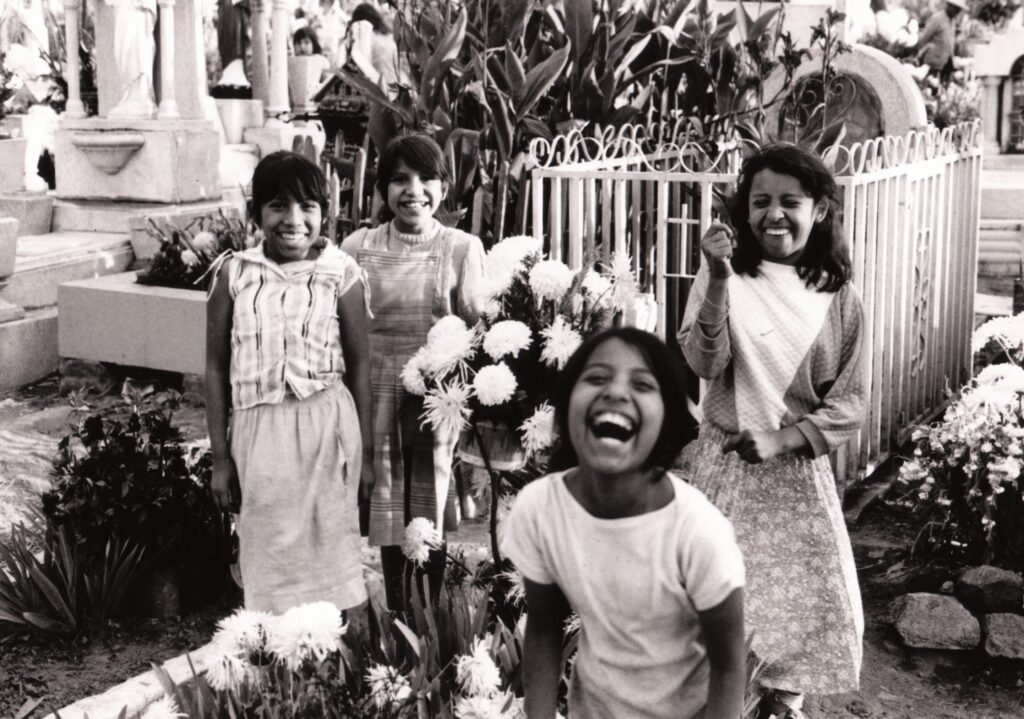
And how did you work with the communities you filmed with throughout your career?
I was engaged with the people that I was filming. I wouldn’t want to make a film with people that I didn’t really click with, or admired, or if they didn’t have a story. It wasn’t like I was going to make something up that didn’t exist. It had to be part of what I was feeling for them. That’s very important. It was very important to me to feel for them. The engagement with your subjects and their representation suffers when the filmmaking becomes a big commercial undertaking. Then the concerns are always commercial. That’s why I think a documentary really cannot be commercial, it has to come from the heart.
A documentary is the perfect vehicle for saying what you really want to say, because you shouldn’t have to sell it. That’s how I felt. There was freedom and that was the hook for me.Sure selling a film was very wonderful but I don’t make films to make money. Documentaries are portraits of reality. They’re precious so you can’t think of selling them. They’re historical, emotional imprints.
At best, I could get a job teaching. That would be like hitting the jackpot but no, I made my films for historic reasons, for moral reasons.
Where do film festivals fit into that vision?
The thing is, the festival directors have to have the same vision as the filmmakers in order to celebrate that kind of film. They have to have an investment in something other than the commercial. This is not to say that commercial films are not gorgeous, wonderful films, but they’re made for different reasons. I think, with documentaries, you can’t think about selling them; you have to think about touching people’s hearts.
If you touch people’s hearts, then people will listen, people will respond. People will do things to help, to make things better. I think that’s what documentaries can do. Look at Hollywood, it’s enormous, it’s wonderful. But it’s not for me.
What’s keeping you busy these days?
I think I’m taking a break, but I’m making a film too. I’m making a film about memory and how we are affected by our memories and how we construct our lives around those memories.
Has the process gotten easier or tougher?
It has remained a very, very exciting process. Every day, I think, it’s gonna be like this. It doesn’t cost anything to think. So I think it one way and then I change, I think it another way. And when I have zoned in onto something, then I write it down. All these years have made me hone in on the process. And I really think it was more unconscious before and now it’s more conscious.
What do you tell younger filmmakers today?
Either you do it because you want money, or do it because you have love and passion for something. You make money on the side; that supports your filmmaking life. Don’t make films to sell them. You don’t have to bend down, you don’t have to change your vision. Serve your vision, and do the best you can to find help to do it correctly, and make sure that you’re getting to where you want to go. You’re making art, really. It’s an expensive way to make art…well not as much as it used to be. If you have another means of supporting yourself, then it’s just perfect.

